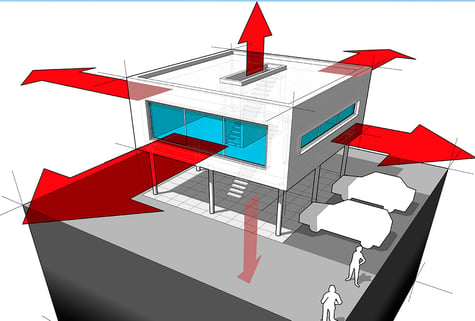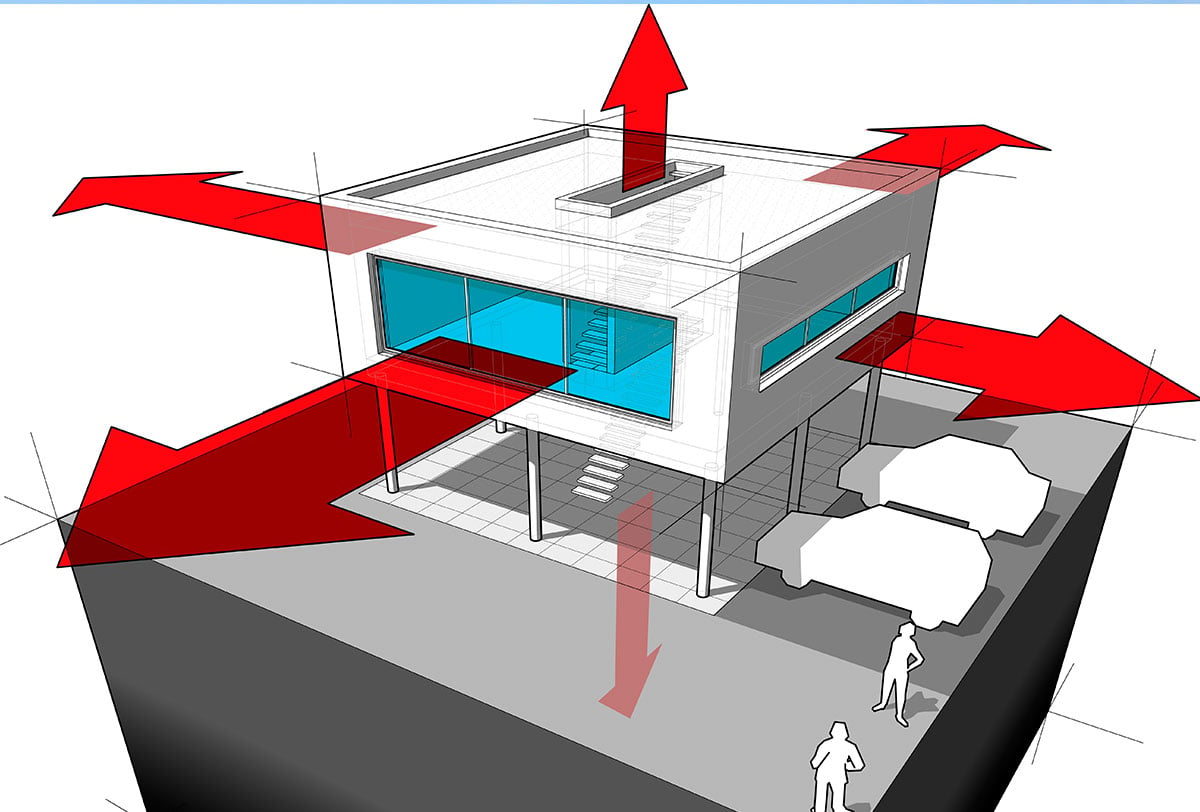
Most of us who grew up in warmer climates can remember hearing shouts of, “Close the door! You’re letting all of the air conditioning out.” Our parents were all too aware of the effect those open doors had on their heating and cooling bills. Multiply that by about a hundred times, and it becomes clear why energy efficiency is so important for commercial buildings. But it’s not just open doors; it’s roof maintenance, too. The majority of energy loss by commercial buildings—both winter and summer—happens via the roof.
Rooftop energy loss
Remember how hot the inside of a car can get on hot summer days? A commercial roof isn’t that different. Most commercial rooftops are large and relatively flat—and absorb heat and radiation from the sun all day long. On a 95-degree summer day, for example, the membrane of a typical commercial roof can heat to as much as 158 degrees. It can take hours for it to cool off once the sun has set. In the meantime, that heat spreads throughout the building, putting an additional load on air conditioning systems. It’s like turning on your home air conditioner full-blast, then wrapping up in an electric blanket set on high.
A similar process happens during the winter—it’s just reversed. A typical commercial building with a flat roof loses about 25% of its heat through the roof. That happens through things like insufficient insulation, inadequate seals, unprotected penetrations, and non-optimized skylights and curbs. If your roof isn’t optimized for energy efficiency, winter weather means spending money to heat not just your roof, but the outside air as well.
What you can do about it
Fortunately, while you can’t completely stop energy loss through your commercial roof, you can take steps to reduce it through proper roof maintenance. There are two approaches, and they’re the most effective when used together:
Stopping Heat Retention
Much of the cost of cooling a building during the summer months is directly related to the roof itself absorbing and retaining heat. Any steps you take to mitigate that process will improve your building’s energy efficiency. Many roofs today are constructed with materials that reflect heat back into the atmosphere instead of absorbing and retaining it. Even if you’re not in the market for a new roof right now, you can accomplish similar results by applying a reflective coating. These “cool roof” coatings can reduce a rooftop’s summer temperature by more than 50 degrees.
One of today’s biggest trends, however, is to take “going green” literally, by covering a portion of the roof with plant life, which can reduce heating and cooling costs by as much as 50%. In fact, one study found that an “extensive” green roof—one with a lot of plant life—reduced the building’s demand for air conditioning in the summer by up to 75%. Plant life can also extend the life of the roof and reduce the need for roof maintenance.
In addition to the direct impact on energy costs, green roofs help mitigate the “urban heat island” effect, improve air quality, and aid in stormwater management. During summer months, for example, the average green roof retains 70-90% of the rain that falls on it.
Stopping Heat Loss
It’s easier to keep a building warm during the winter than it is to cool it in the summer, but you still don’t want to spend more on heating than you have to. The most common culprit is missing or inadequate insulation—every area where heat escapes from your building to the outside air adds to your bill. This is especially common in older buildings that were constructed using insulation that is less effective than today’s products. In addition, insulation can degrade or settle over time, creating weak spots that allow heat to escape. If the roof has water leaks, mold can form, decreasing the effectiveness of the insulation even more. And—let’s face it—some buildings were never insulated properly to start with. Whatever the underlying reason might be, inadequate insulation leads directly to higher heating costs in the winter.
Thermal imaging is the best way to detect temperature differences on a rooftop. It used to be an expensive—and sometimes dangerous—endeavor, but today’s drone technology makes it much simpler. The scan clearly identifies hot spots, which you can then target for additional insulation.
If your building’s energy costs are higher than you’d like them to be, check your roof first. It’s very likely to be the primary culprit. Whether it’s cooling your building in the summer or heating it throughout the winter, an energy-efficient roof can greatly reduce your energy costs.





